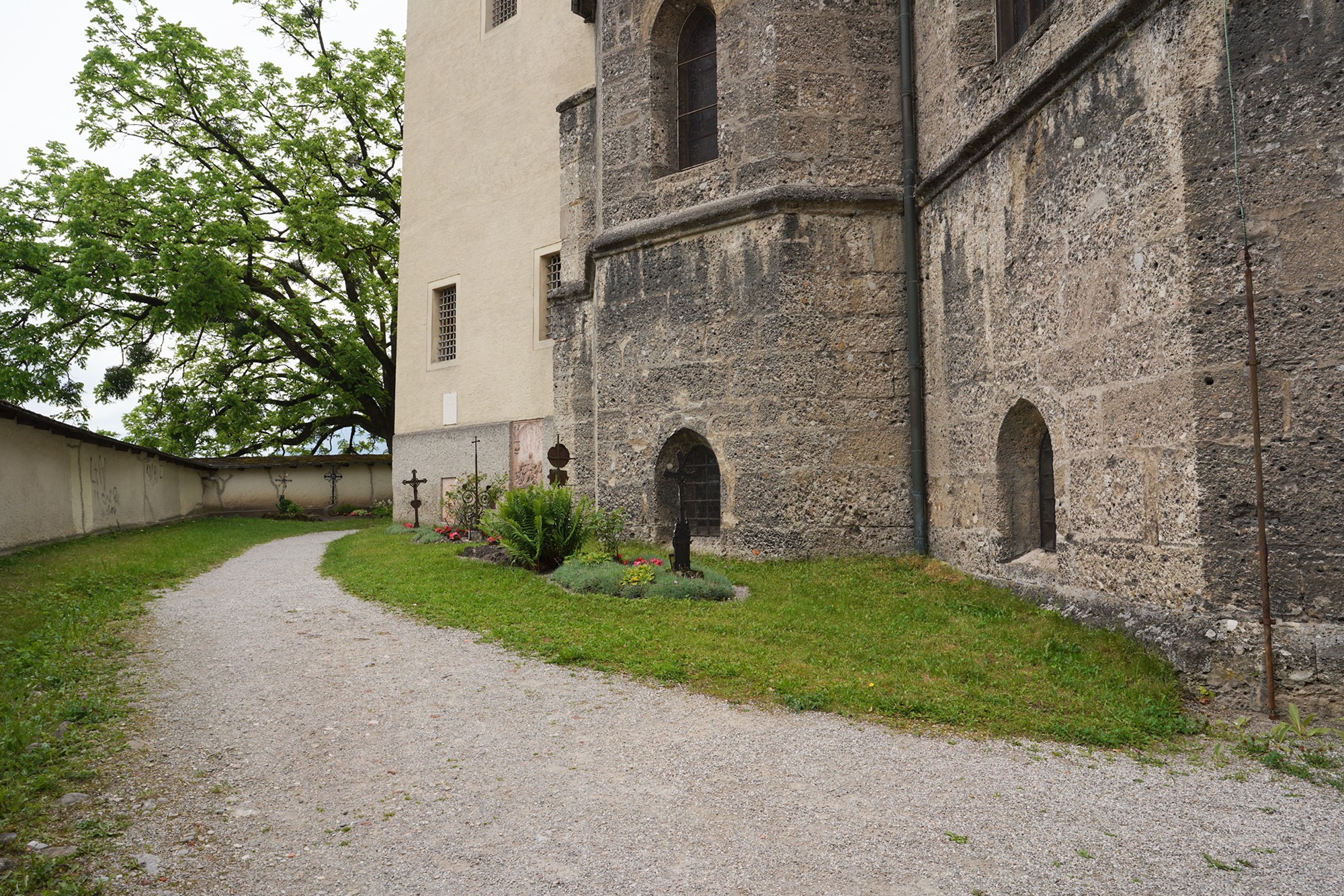More Salzburg and Sound of Music Areas, Salzburg, Austria
Other Salzburg areas that were not visited in previous blogs. 916
Stiftskirche St. Peter: Sankt-Peter-Bezirk, 5020 Salzburg, Austria
Friedhof St. Peter (Cemetery): Sankt-Peter-Bezirk 1, 5020 Salzburg, Austria
Wasserrad (Water Wheel): Sankt-Peter-Bezirk 3, 5020 Salzburg, Austria
Salzburg Cathedral: Domplatz 1a, 5020 Salzburg, Austria
DomQuartier Salzburg: Residenzplatz 1, Domplatz 1a, 5020 Salzburg, Austria
Stift Nonnberg (Convent): Nonnberggasse 2, 5020 Salzburg, Austria
Date Picture Taken: May, 2024
I spent a day visiting the places I missed while in Salzburg.



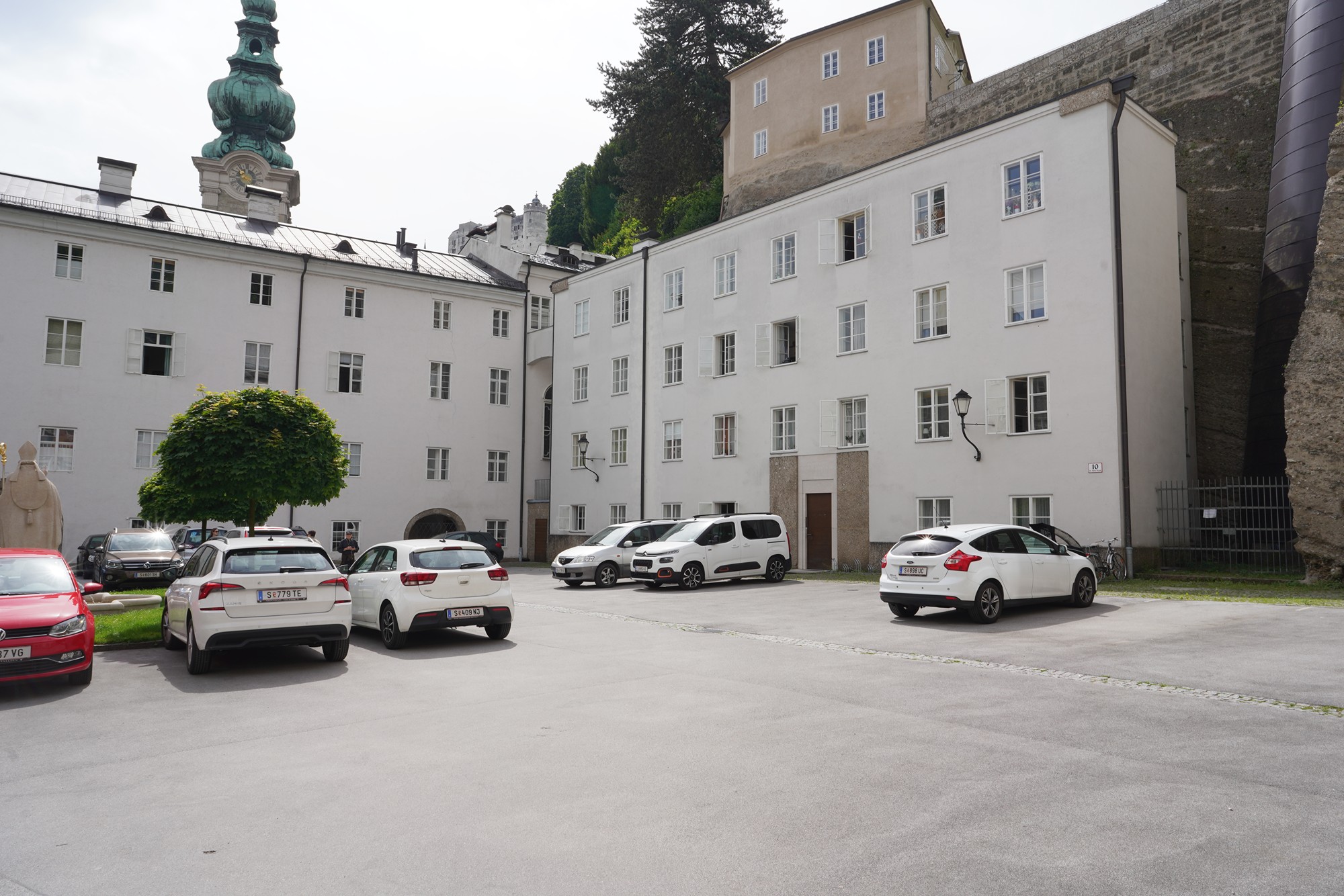

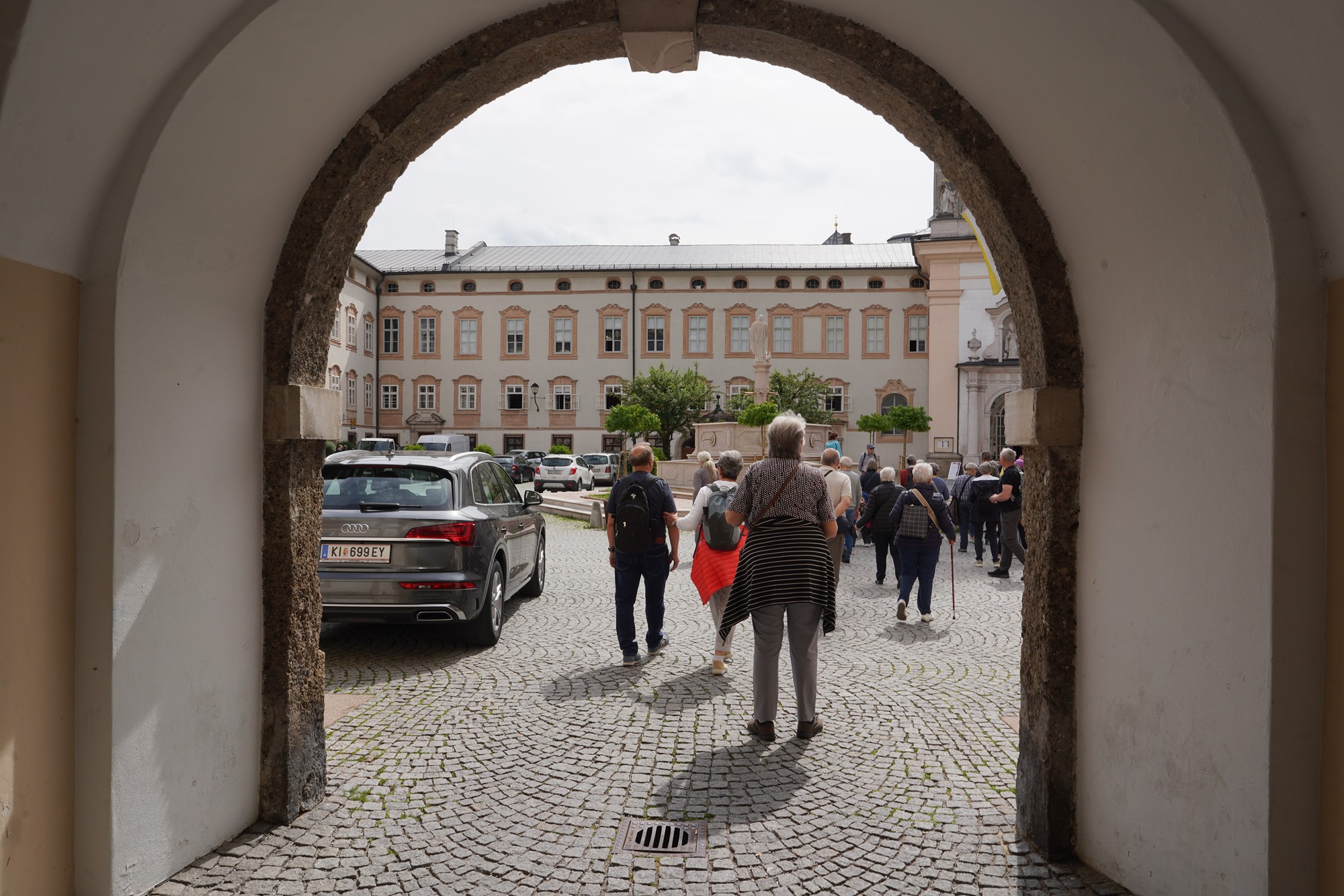

The Stiftskirche St. Peter. The church is part of St. Peter’s Abbey, which is one of the oldest monasteries in the German-speaking world, dating back to the 7th century. The abbey has played a crucial role in the religious and cultural life of Salzburg.


The church itself is a fine example of Baroque architecture, with its ornate decorations, beautiful frescoes, and an impressive high altar. It also incorporates elements from earlier periods, including Romanesque and Gothic styles.


Inside, the church features elaborate stucco work, paintings, and altars. The high altar, created by Martin Johann Schmidt, is particularly noteworthy. The church also houses the tomb of St. Rupert, the patron saint of Salzburg, and other significant burials.





The back side


Out of the church and to the next plaza through a passage way in the building





And to the next area through another passageway in the building


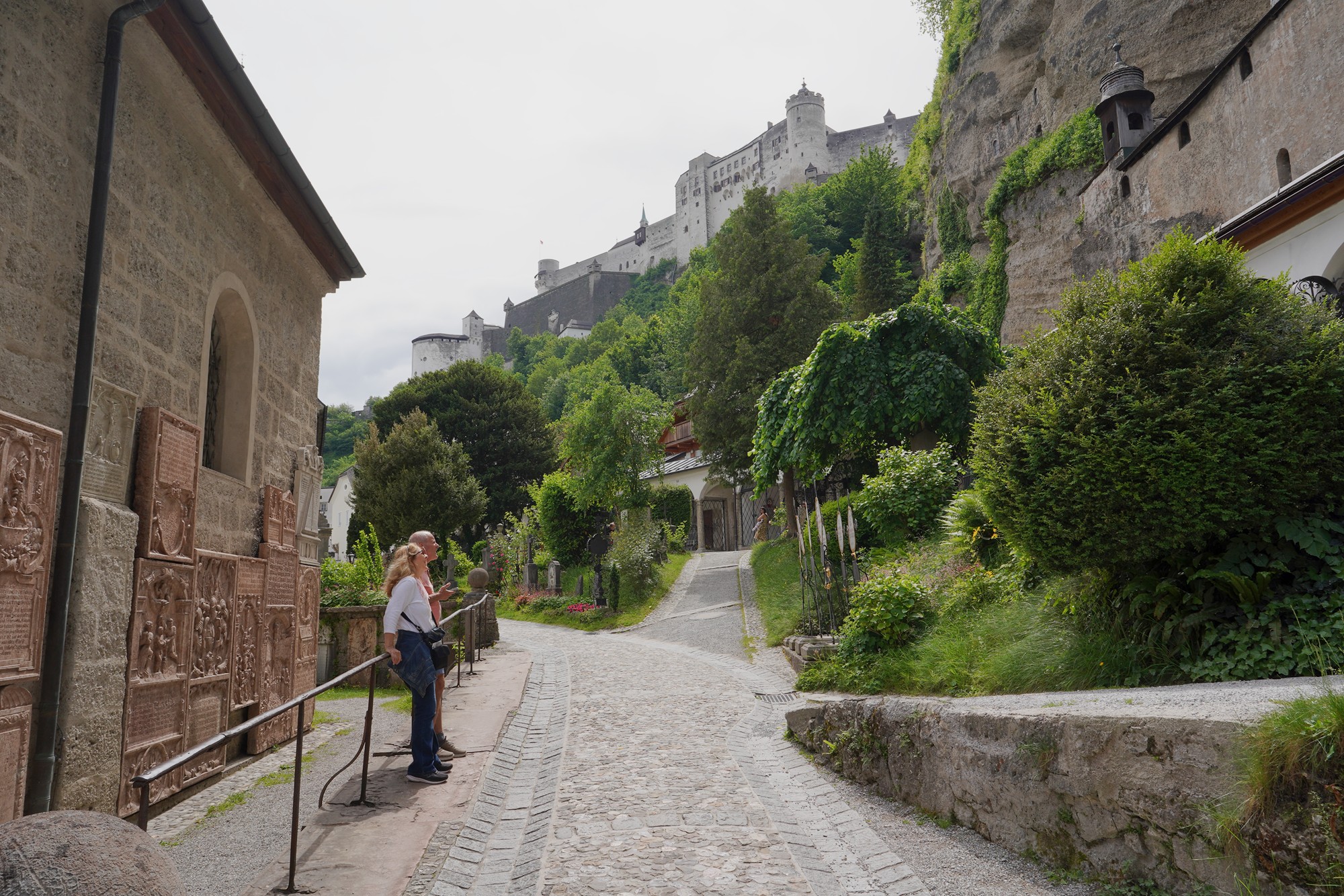

Friedhof St. Peter (Petersfriedhof) Cemetery.
The Friedhof St. Peter, also known as Petersfriedhof or St. Peter’s Cemetery, is one of the oldest and most beautiful cemeteries in Salzburg, Austria. It is located adjacent to St. Peter’s Abbey (Stiftskirche St. Peter) in Salzburg’s Old Town and is known for its historical significance, serene atmosphere, and the resting places of notable individuals.



Petersfriedhof dates back to the late 7th century, making it one of the oldest Christian burial grounds in Europe. It has been a burial site for centuries and continues to be a place of reverence and reflection.


One of the most famous scenes in “The Sound of Music” takes place in the cemetery. In the movie, the von Trapp family, fleeing from the Nazis, hides behind the tombstones in the cemetery’s arcades. The dramatic setting of the cemetery, with its shadowy arcades and wrought-iron gates, provided the perfect backdrop for this tense moment in the film.

Although the scene is iconic, it’s important to note that the actual filming of the scene didn’t take place directly in Petersfriedhof. Instead, a replica of the cemetery was created on a soundstage in Hollywood. However, the design and atmosphere of the cemetery in the film were heavily inspired by Petersfriedhof, capturing its historic and serene ambiance.






Out of the cemetery and to the next location

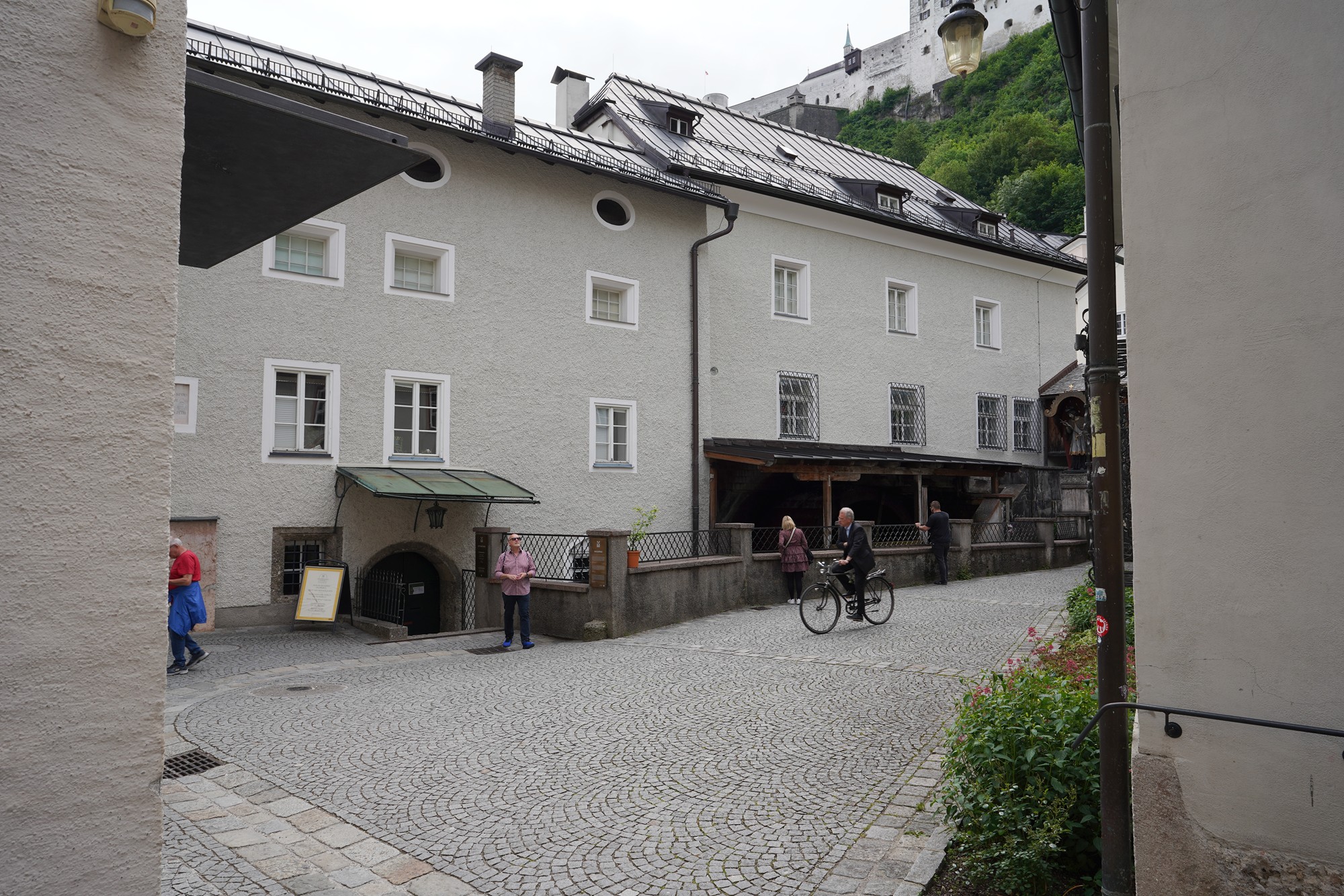

Wasserrad – Water Wheel.

This water wheel is one of several used to harness the water flow from the Almkanal, a medieval water channel system dating back to the 12th century. It was designed to bring water from the nearby Untersberg mountain into Salzburg.



Kapitelplatz


Domplatz


The Salzburg Cathedral. The Salzburg Cathedral, dedicated to Saints Rupert and Vergilius, is the seat of the Archbishop of Salzburg.
The original cathedral on this site dates back to the 8th century, but it has been rebuilt several times due to fires and other events. The current Baroque structure was completed in 1628 under the direction of Prince-Archbishop Paris Lodron.
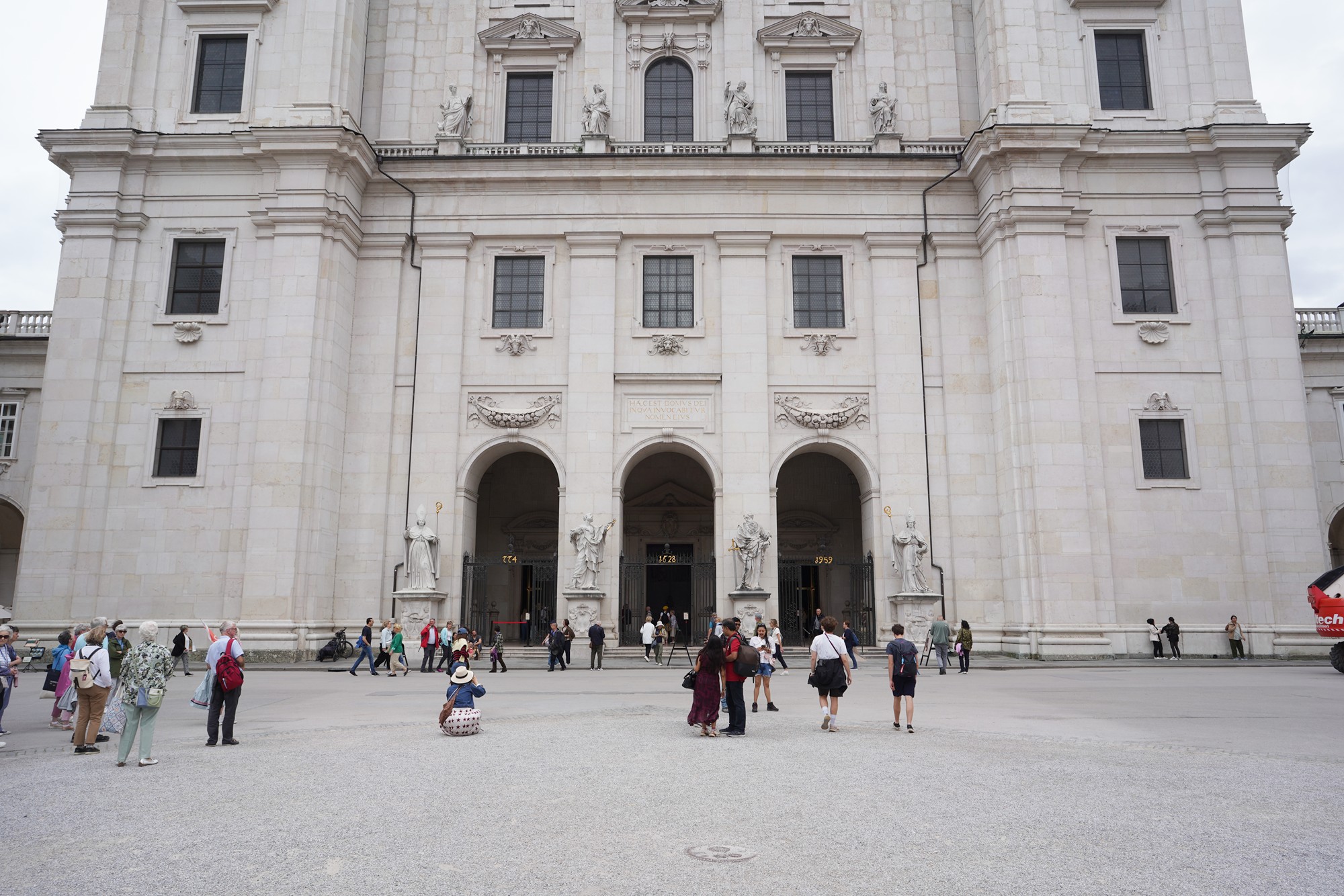
The cathedral is a stunning example of early Baroque architecture, designed by the Italian architect Santino Solari.
Its façade is made of white marble, with twin towers and an imposing dome that dominates the city skyline.


The interior is equally impressive, featuring a grand nave, intricate stucco work, and beautiful frescoes. The cathedral can accommodate around 10,000 people, reflecting its importance as a center of worship and community.

Salzburg Cathedral has been the site of many important events, including the baptism of Wolfgang Amadeus Mozart in 1756. The baptismal font where Mozart was baptized is still located in the cathedral.


Major religious ceremonies, including ordinations, important masses, and festivals like the Salzburg Festival, are held here, making it a focal point for both the religious and cultural life of Salzburg.

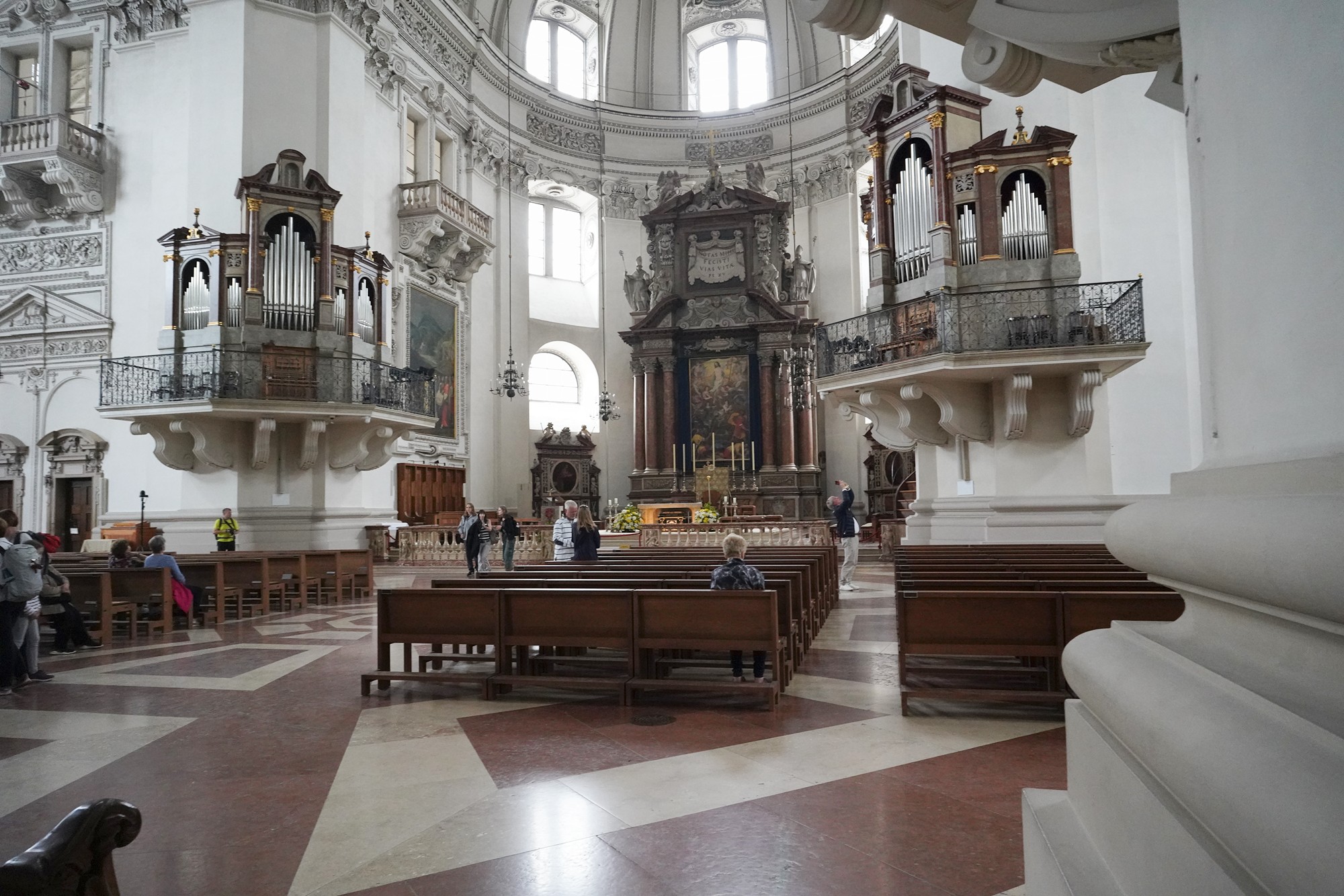


Out of the church and headed to a museum in DomQuartier




The DomQuartier


The museum was closed.


Headed to the day’s last destination, Stift Nonnberg, a Benedictine convent







The convent





Stift Nonnberg is a Benedictine convent in Salzburg, Austria, and is one of the most historically significant religious sites in the city. It is particularly renowned for being the oldest continuously active nunnery in the German-speaking world.


Stift Nonnberg was founded in 714 AD by Saint Rupert, the patron saint of Salzburg. It was established for his niece, Saint Erentrudis, who became its first abbess.
The convent has remained in continuous operation since its founding, making it a site of great historical and religious importance.


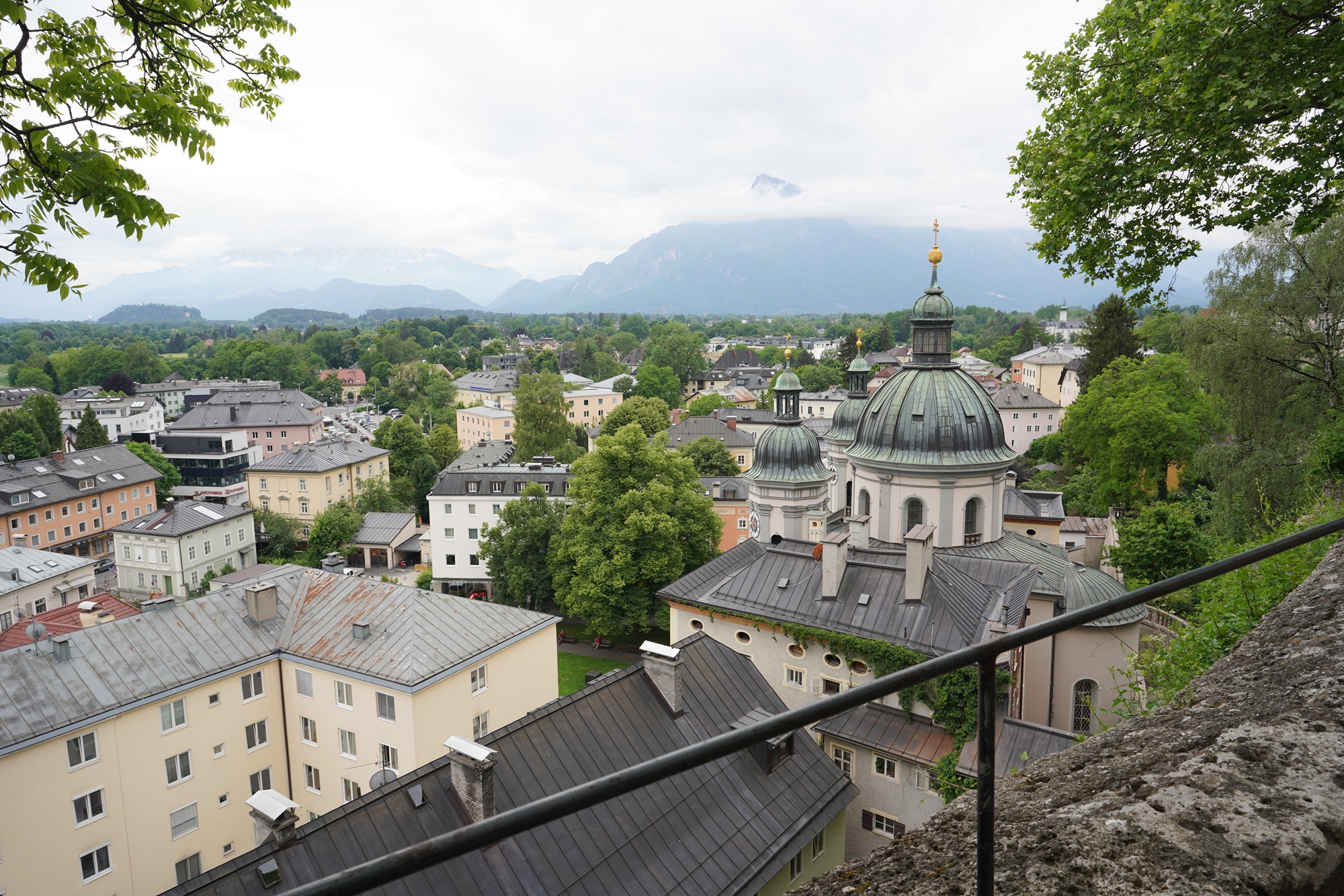

The convent complex includes a church, cloisters, and other buildings that have been expanded and renovated over the centuries. The architecture blends Romanesque, Gothic, and Baroque styles.
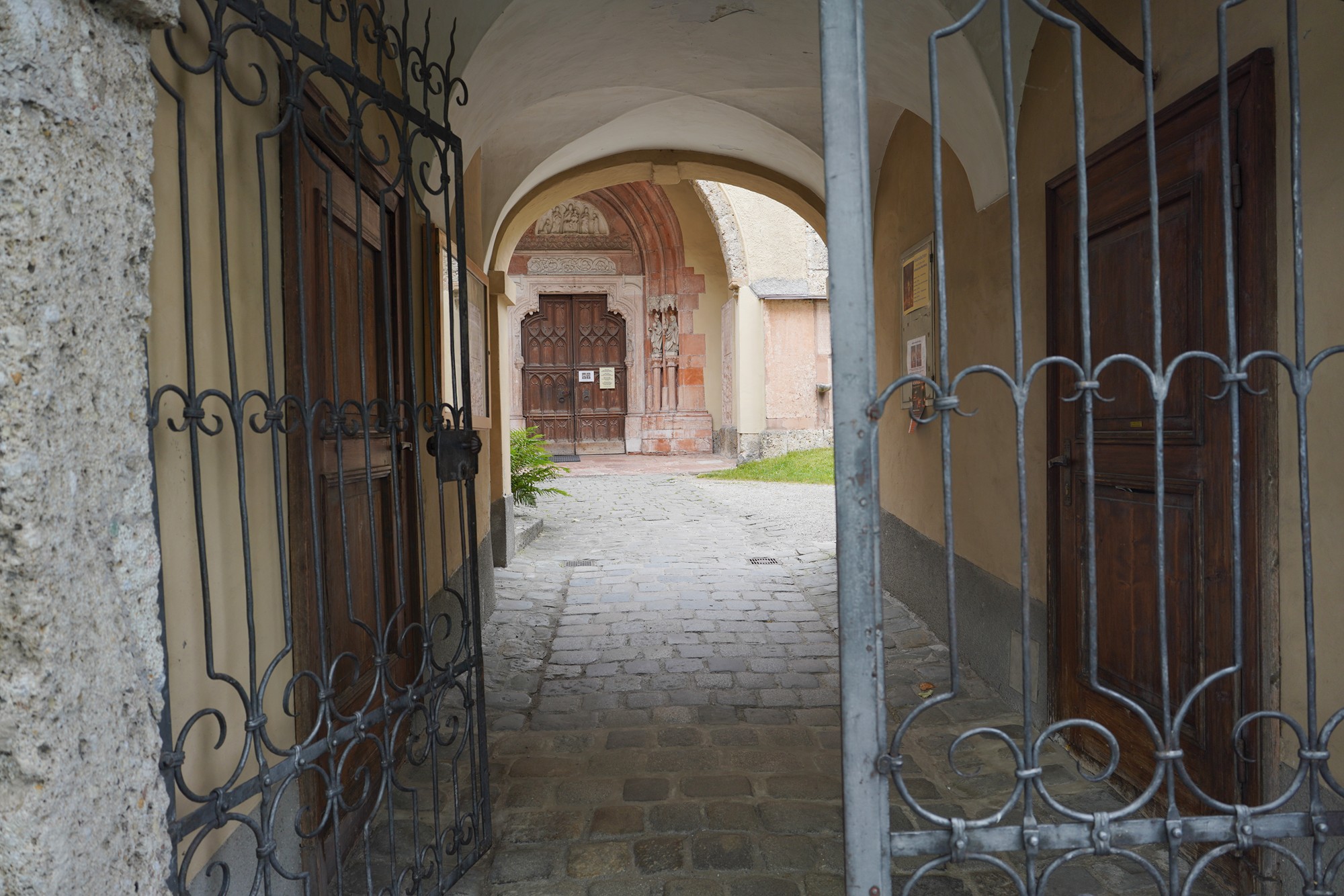


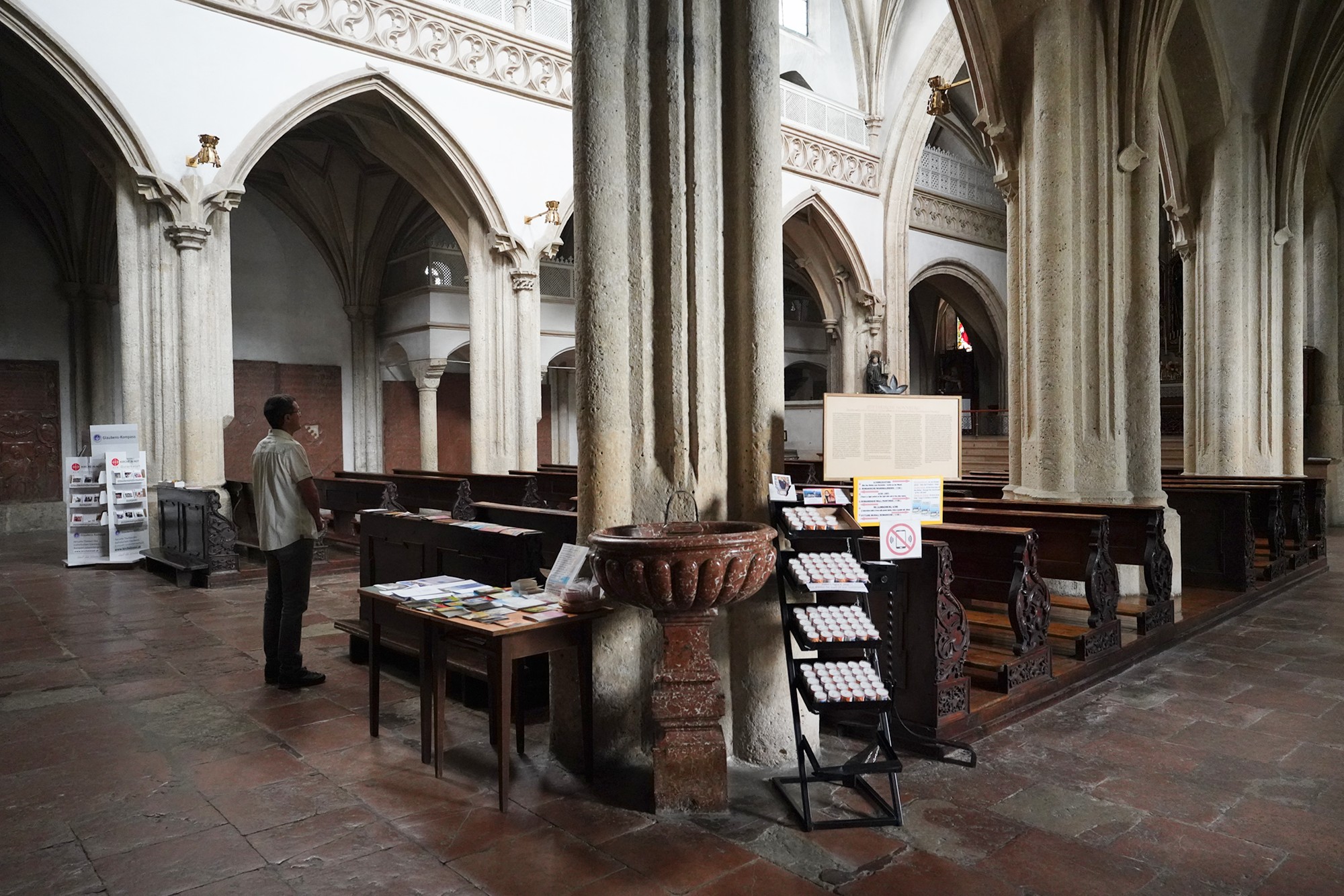
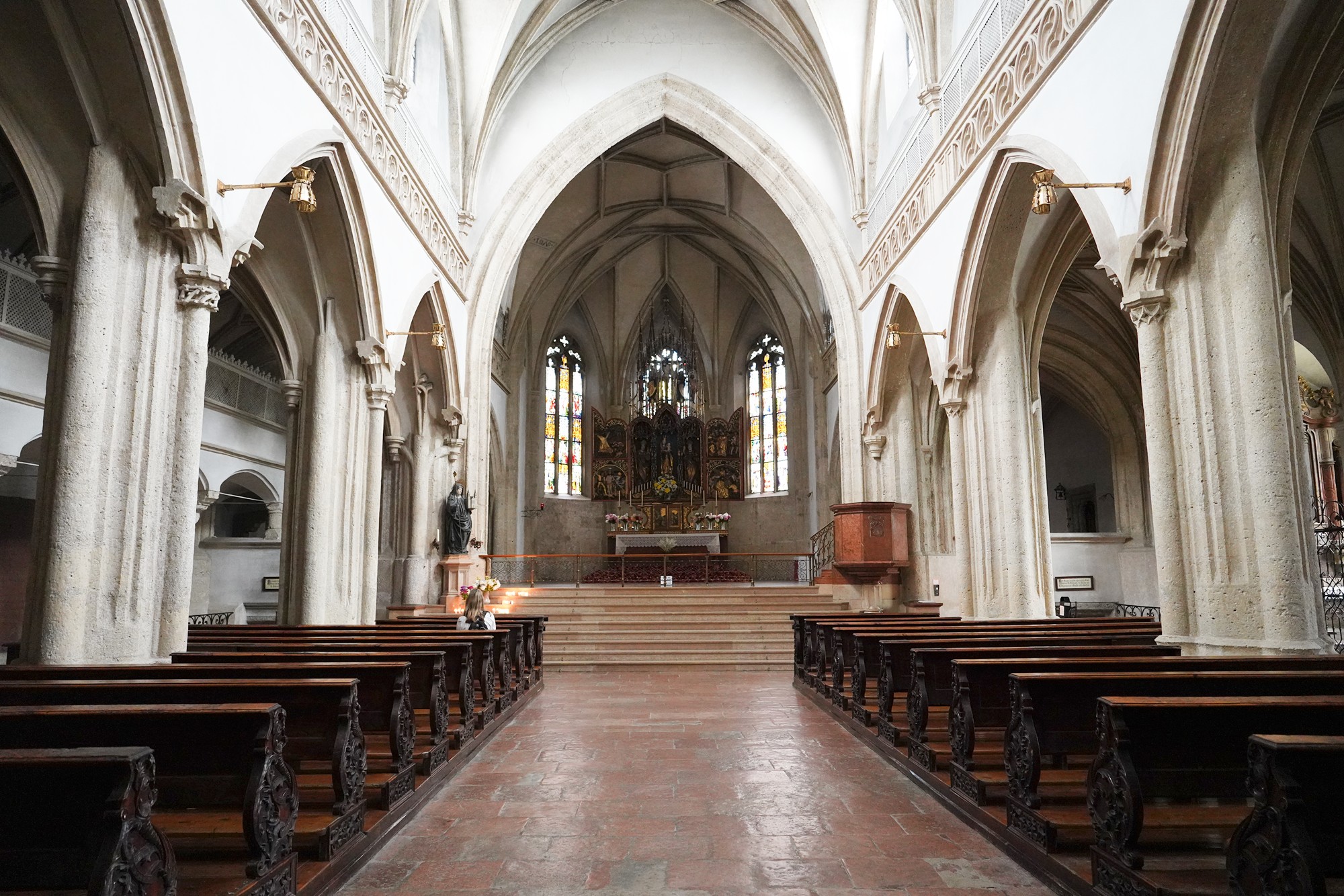




Stift Nonnberg gained international fame as the convent where Maria Augusta Kutschera (later Maria von Trapp) lived as a novice before becoming the governess to the von Trapp family, a story that inspired the musical “The Sound of Music.” Although the movie fictionalized many aspects, the real Maria did spend time at Stift Nonnberg.

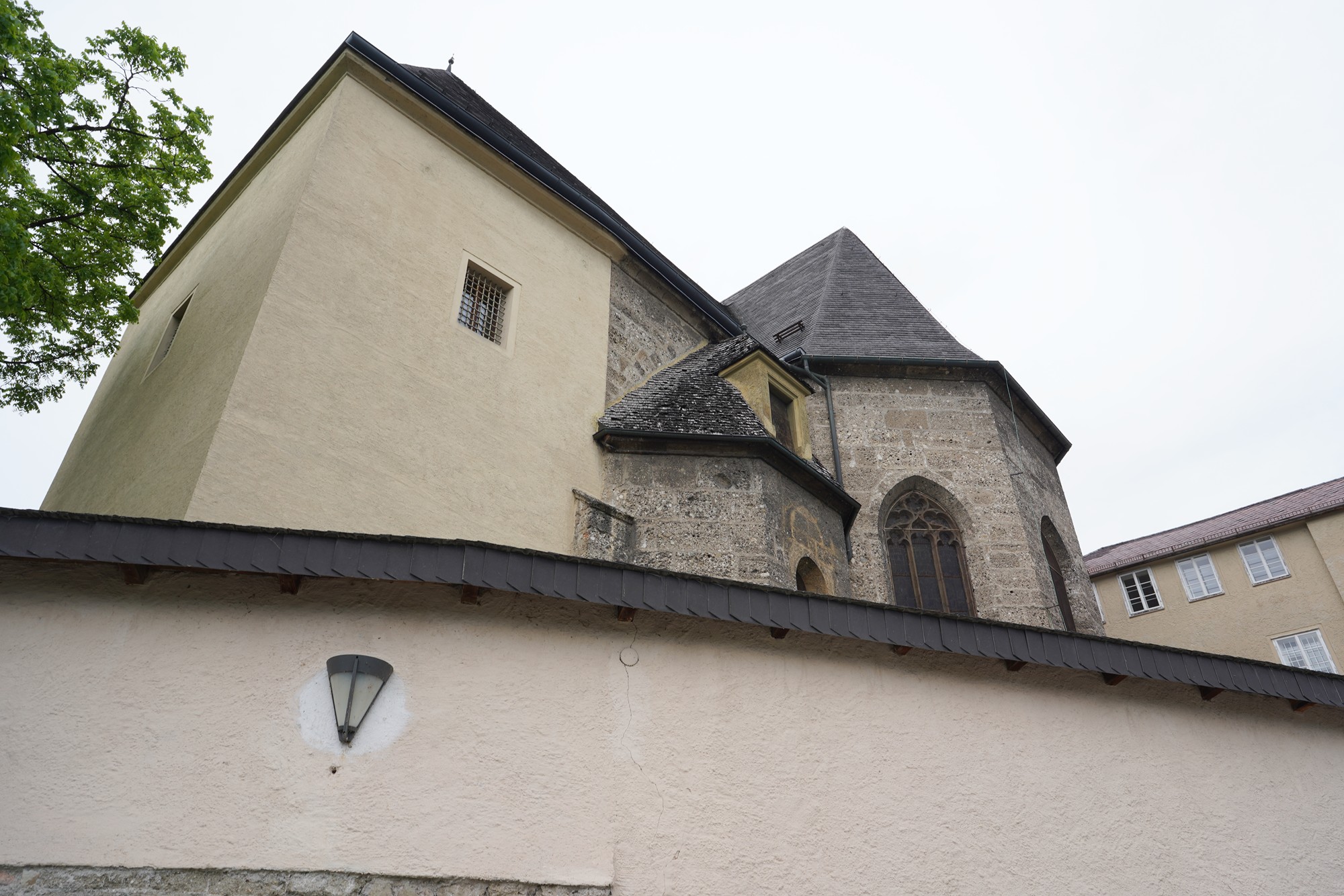
The convent and its church were featured in the film adaptation of “The Sound of Music.” The opening scenes, where the nuns sing “Maria,” and Maria leaves the convent to start her journey with the von Trapp family, were filmed here.

